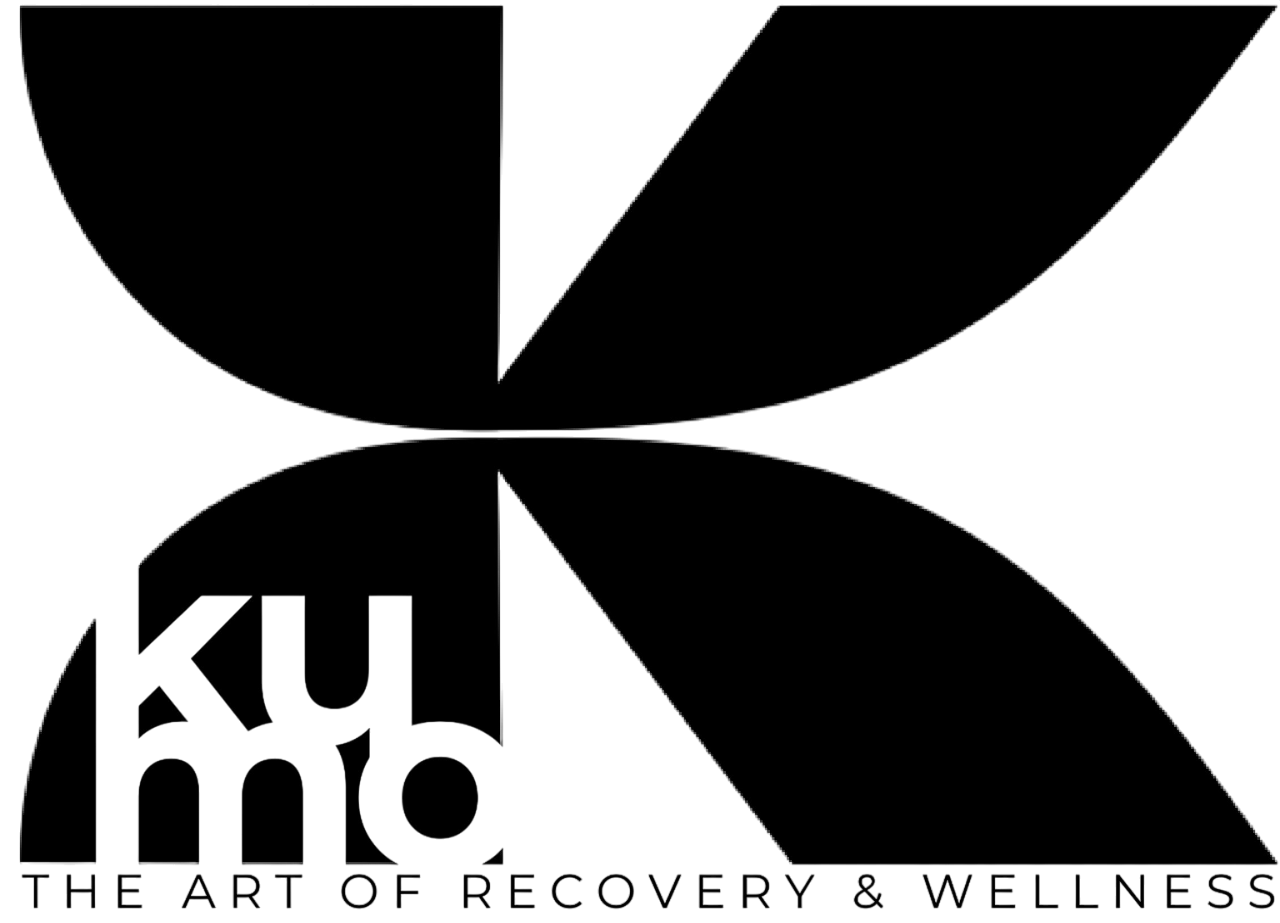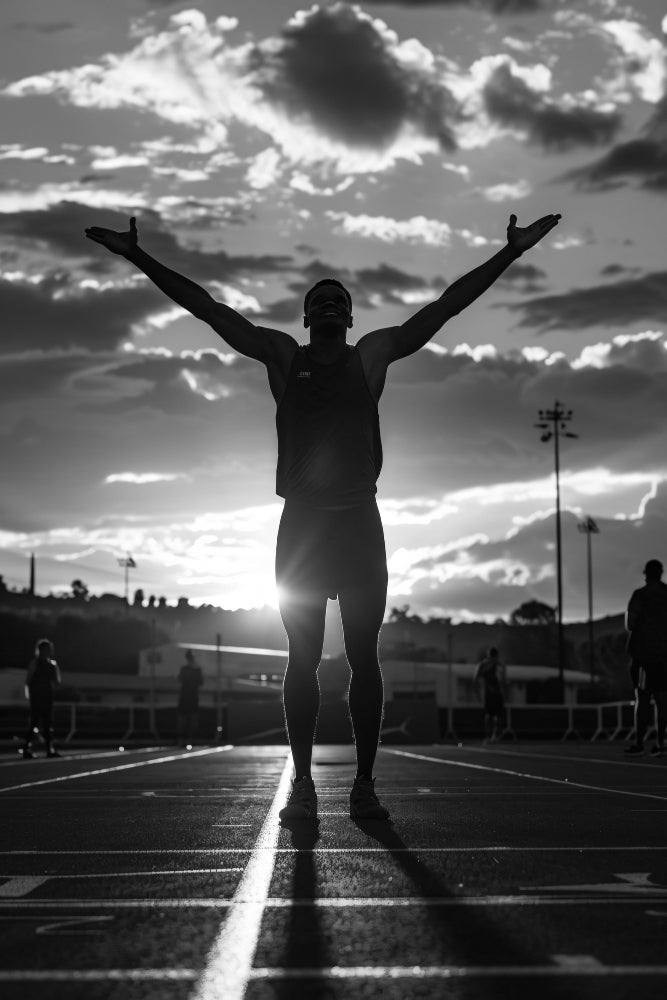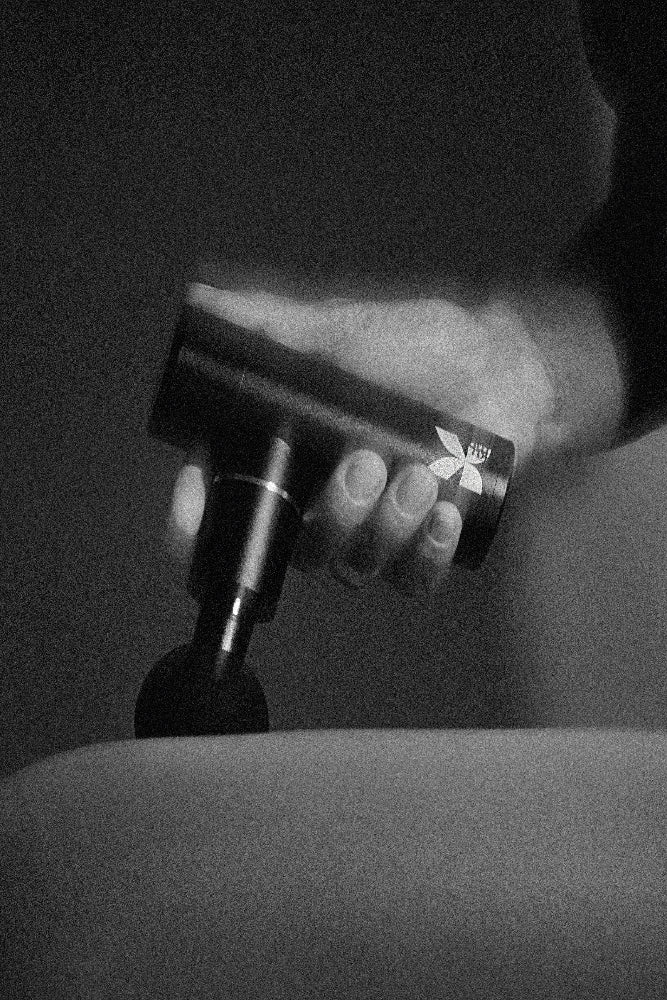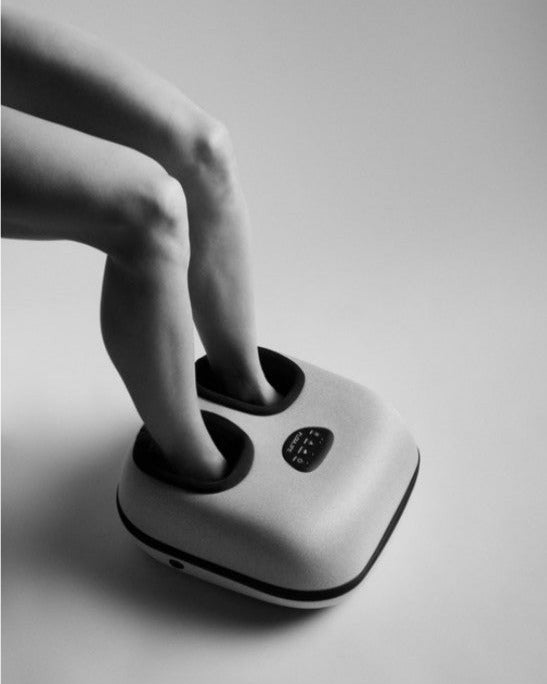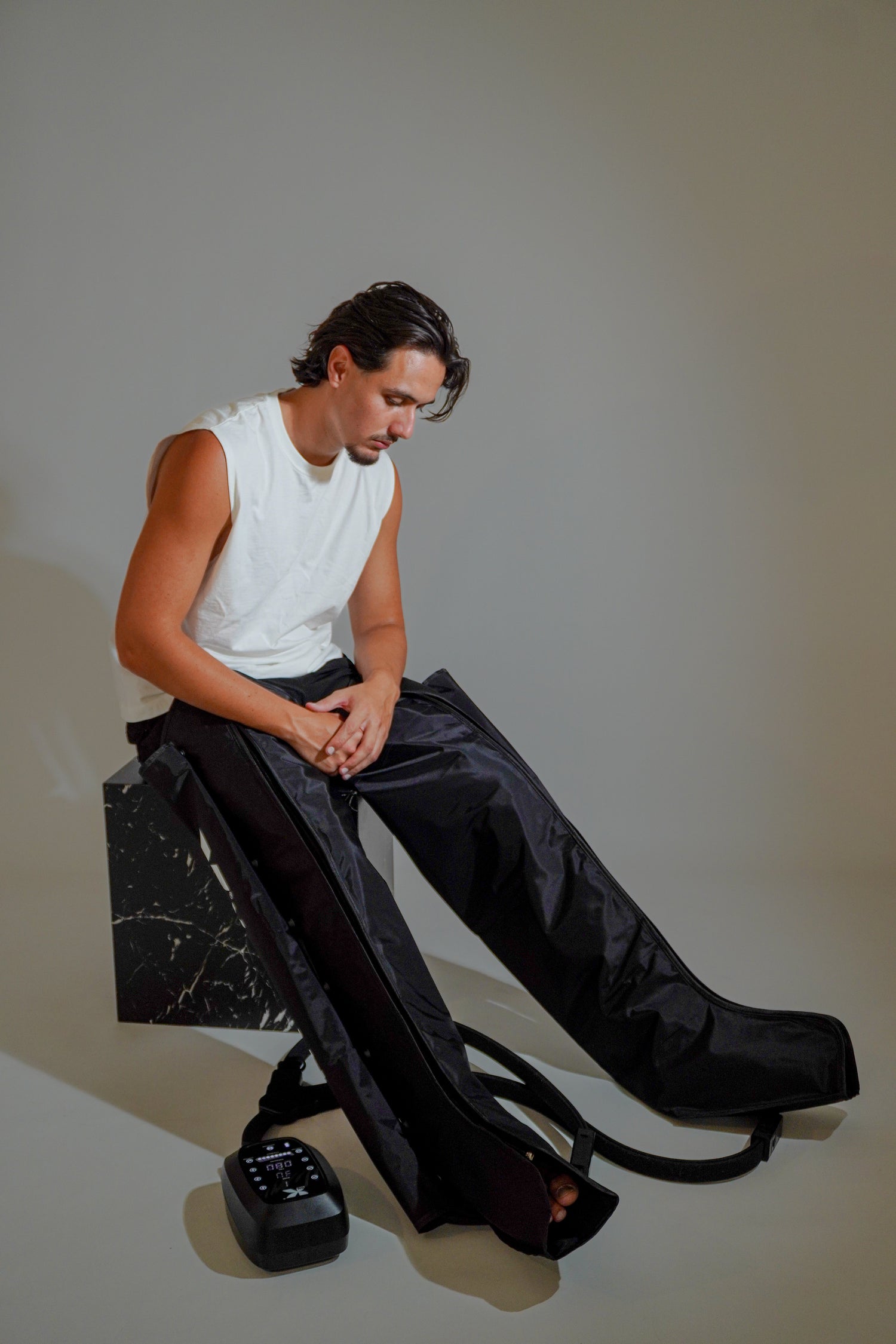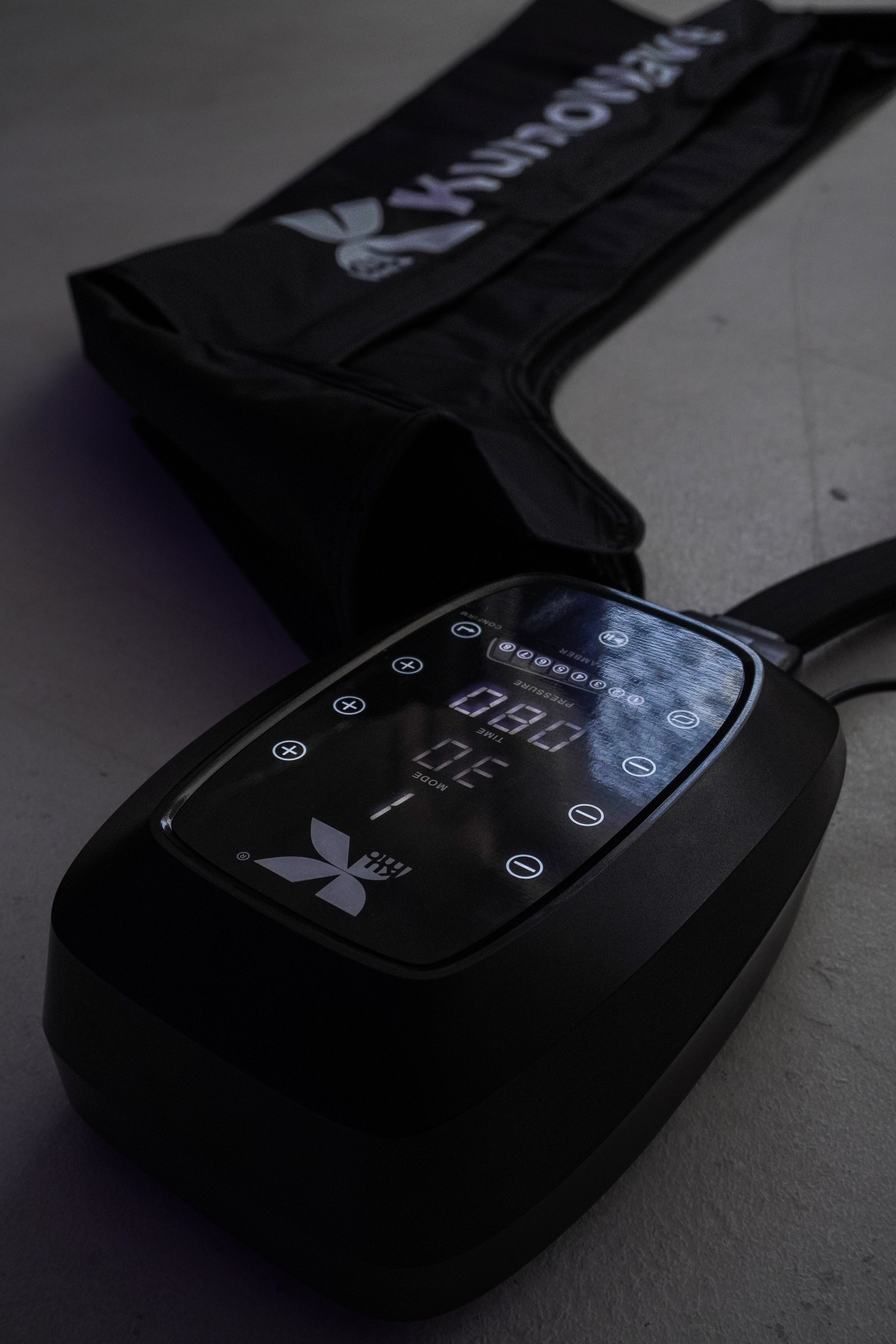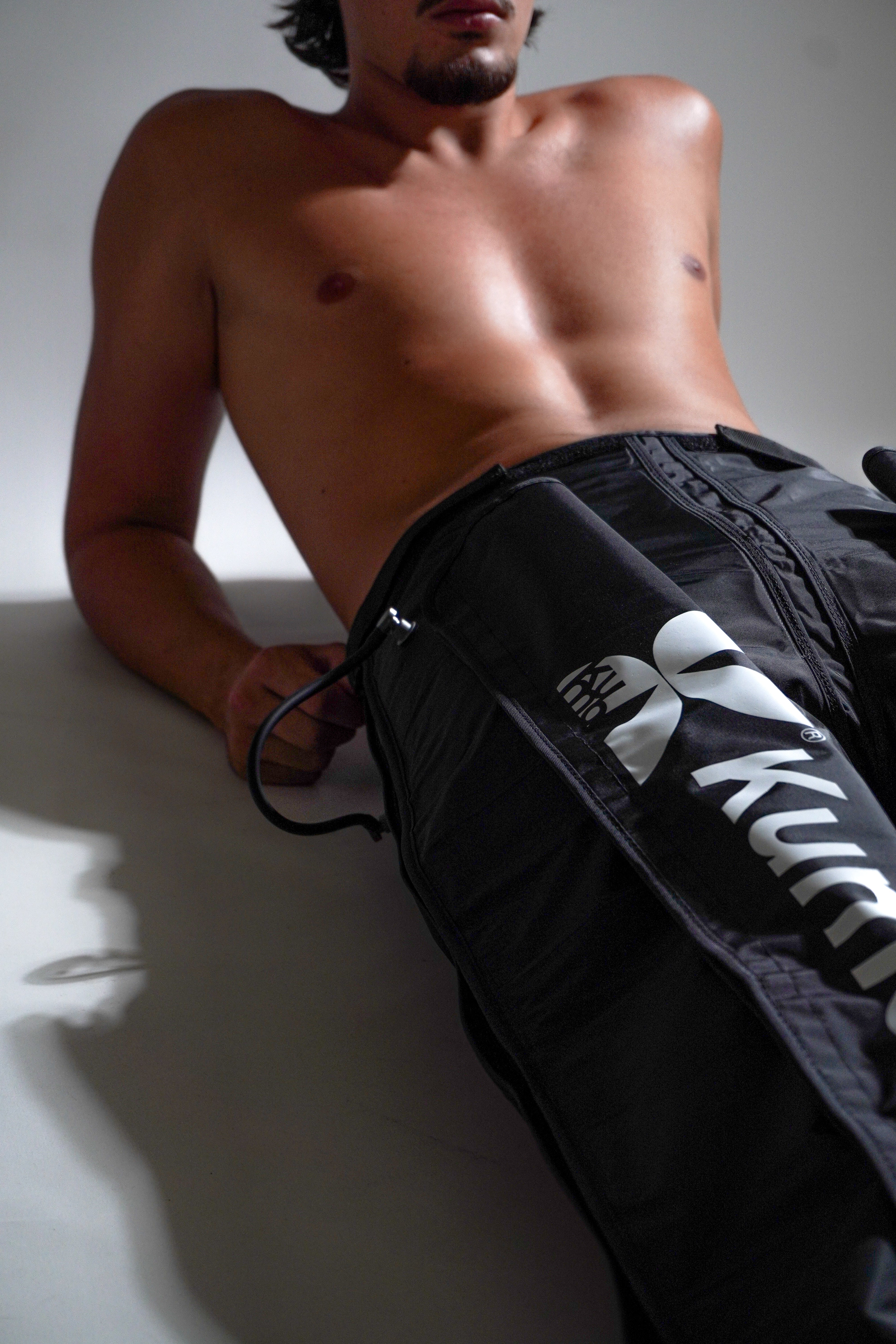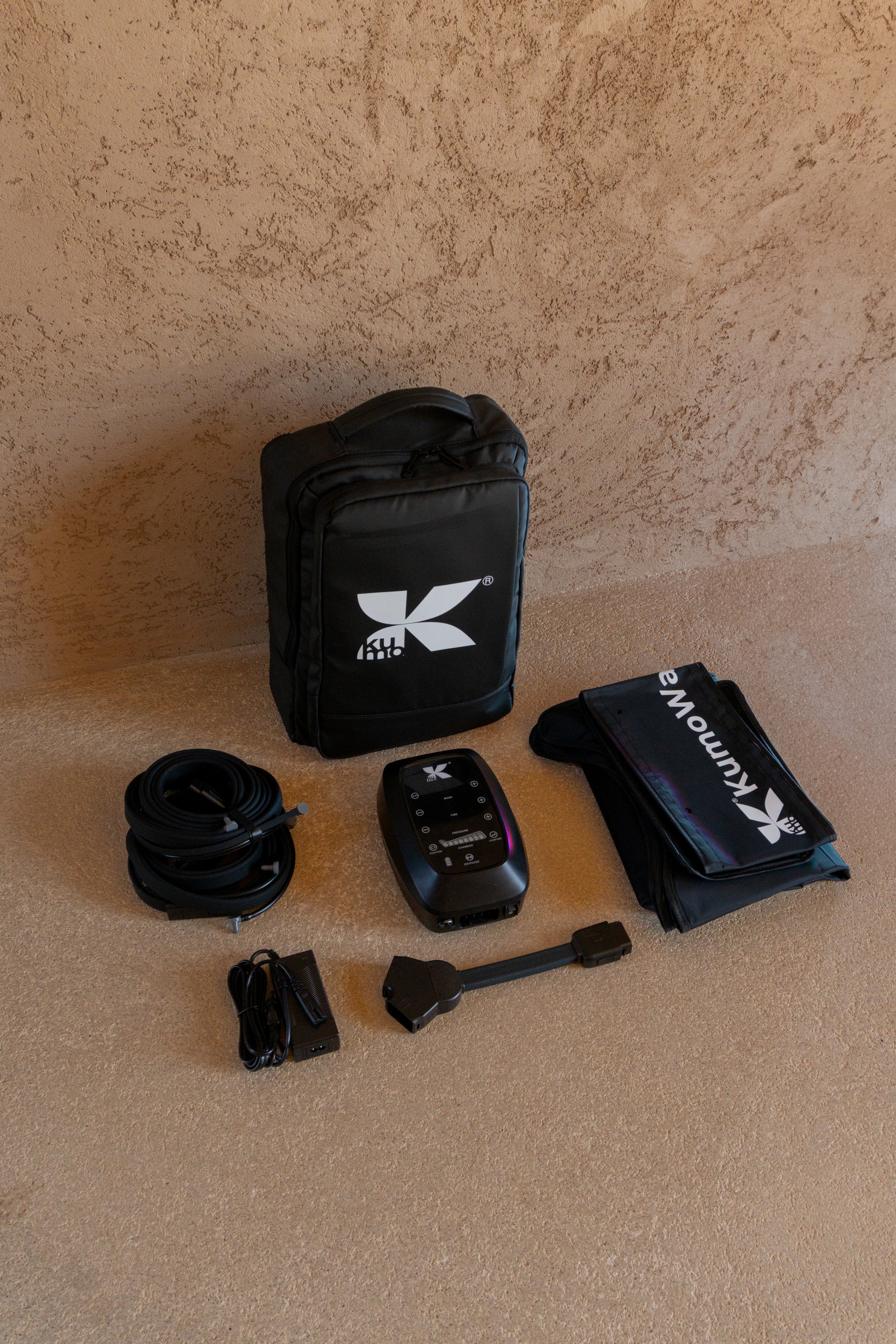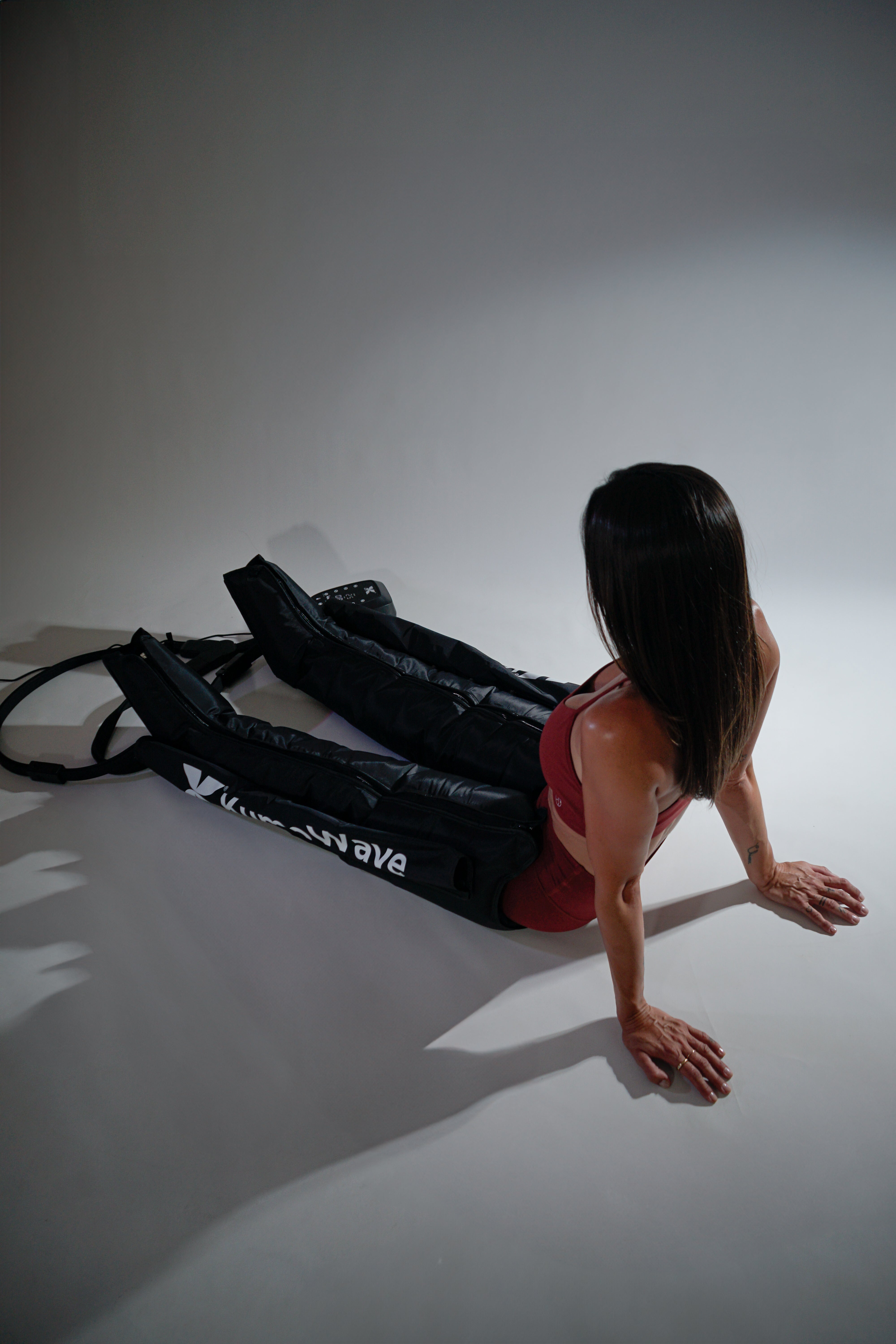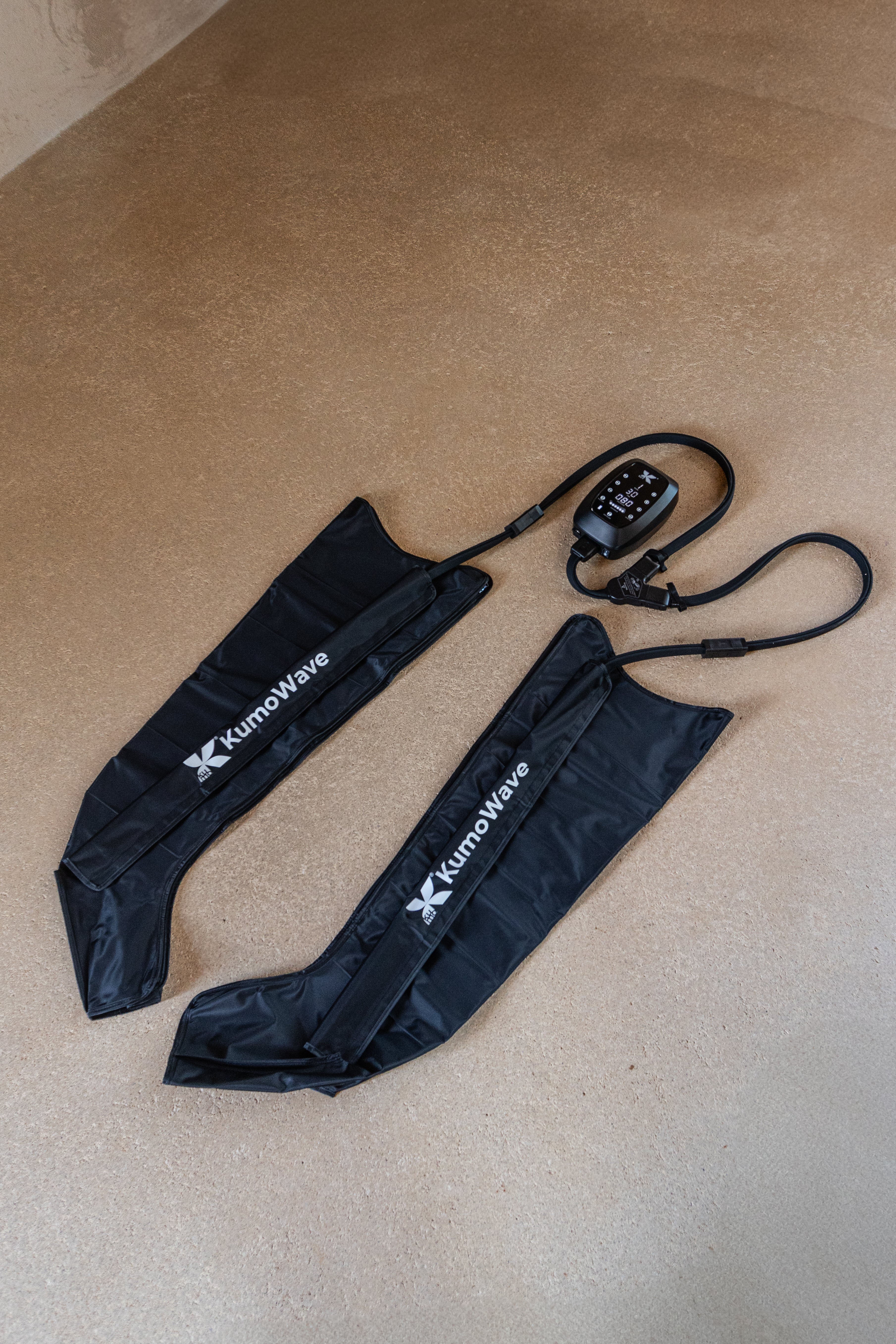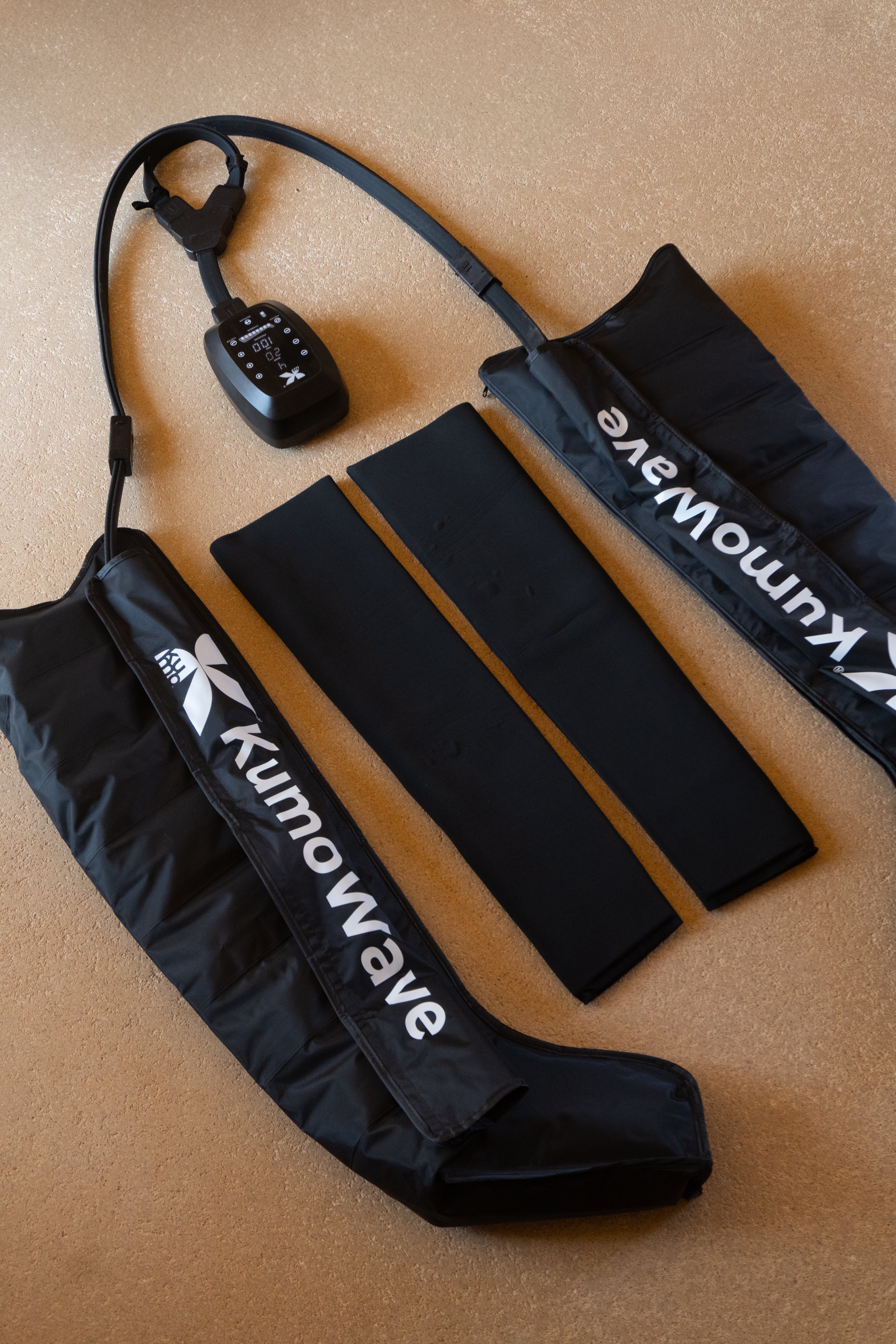Lymphatic drainage and pressure therapy: the combination that optimizes your recovery. Here, you'll discover what each technique does, how to combine them safely, who they're recommended for, and how to integrate them into your routine with real results.
Coming soon
- Lymphatic drainage mobilizes fluids and toxins with gentle maneuvers; pressotherapy uses pneumatic compression to activate venous and lymphatic return.
- Together, they improve the feeling of light legs, reduce swelling and accelerate recovery after exercise.
- Recommended order: manual drainage to “open pathways,” then pressure therapy to maintain and enhance flow.
- 2–5 sessions/week (20–30 min) depending on the objective and tolerance, with gentle hydration and mobility.
- Avoid if there is acute venous thrombosis, active infection, or decompensated heart failure; consult if you have any questions.
| Technique | What are you doing | Sensation | When to use |
|---|---|---|---|
| Lymphatic drainage (manual) | Stimulates lymph flow in superficial layers with light pressure and precise rhythms | Very soft, relaxing | Mild edema, retention, post-exercise, relaxation |
| Pressotherapy (pneumatic compression) | Sequential pressure waves that drive venous/lymphatic return | Rhythmic, progressive compression | Tired legs, sports recovery, home maintenance |
What is lymphatic drainage and how does it work?
Manual lymphatic drainage (MLD) is a massage technique that uses very gentle pressure and rhythmic movements to promote lymph flow to the lymph nodes. Its main objective is to mobilize interstitial fluids and reduce the feeling of heaviness or swelling, while improving the elimination of metabolic waste products.
- The lymphatic system is involved in immunity and fluid balance. If its flow slows, edema or a feeling of congestion may occur. For more information, check out this MedlinePlus overview of the lymphatic system. diseases of the lymphatic system .
- In clinical practice, DLM is part of a comprehensive decongestive therapy; in wellness, it is used for light legs and gentle recovery. Cleveland Clinic describes indications, technique and precautions of lymphatic drainage.
KUMO Tip: Excessive pressure does not improve drainage; the effectiveness of the DLM depends on gentleness and proper direction.
What does pressotherapy do?
Pressotherapy (intermittent pneumatic compression) uses boots or cuffs that are inflated and deflated by air chambers in sequence. These gradual pressure waves propel blood and lymph from the foot toward the thigh, helping to relieve heaviness and speed recovery after workouts.
- At home or in the studio, the pressotherapy boots They allow sessions of 20–30 minutes, adjusting pressure and programs.
- The International Society of Lymphology (ISL) includes intermittent pneumatic compression as a complement to decongestive management, based on clinical criteria (2020 consensus). ISL 2020 .
Basic sensations and parameters
- Moderate and comfortable pressure; never painful.
- Sequential rhythm from distal to proximal.
- Typical duration: 20–30 min per session, 3–5 days/week for intensive phases; 1–3 days/week for maintenance.
How pressotherapy and lymphatic drainage complement each other
Both techniques pursue a more efficient flow, but from different angles:
- The DLM “prepares the pathways” by stimulating superficial lymph nodes and lymphatics with specific maneuvers.
- Pressotherapy applies a sustained pressure gradient that consolidates this flow and reduces venous and lymphatic stasis.
Recommended order
- Manual lymphatic drainage (professional or guided self-massage) to activate lymph node areas (groin, popliteal) and exit routes.
- Pressotherapy with a sequential program and comfortable pressure to reinforce the return and maintain the effect.
In practice
- Athletes: Light post-competition DLM + 20–30 min of pressotherapy the following day.
- Offices and travel: Pressotherapy 3–4 times/week for tired legs; DLM 1–2 times/week for maintenance.
- Wellness at home: combines pressotherapy with diaphragmatic breathing and ankle/hip mobility.
Benefits and who it is ideal for
- Heavy legs and light retention: feeling of lightness, smaller girth at the end of the day.
- Sports recovery: improved metabolite elimination and reduced perceived stiffness after intense workouts.
- Prolonged sitting/standing: relief from congestion and night cramps.
- General well-being: relaxation, better rest after the session.
It is not a medical treatment for pathologies; in cases of diagnosed lymphedema or vascular diseases, the approach should be individualized by a professional. Review of the fundamentals and role of the lymphatic system in health: MedlinePlus (es) .
How to integrate it into your weekly routine
- 2–3 days/week: pressotherapy 20–30 min after work or training.
- 1–2 days/week: Drainage session (professional or gentle self-massage) to maintain clear pathways.
- Diary: hydration, diaphragmatic breathing for 5 minutes, and short walks.
- Technological supports to recover better:
- Red light for relaxation and circadian rhythms: explore the LED light therapy .
- Focal myofascial release in the calves/hamstrings with the KumoPulse Air massage gun before pressotherapy.
If you want inspiration and philosophy of elegant and effective recovery, discover KUMO .
Safety, contraindications and responsible use
Avoid unsupervised pressotherapy and drainage when there is:
- Acute or recent deep vein thrombosis.
- Active skin or systemic infection (cellulitis, fever).
- Decompensated heart failure, uncontrolled cardiac edema.
- Severe peripheral arterial disease or ischemic pain.
- Any uncovered open wound or thrombophlebitis.
In pregnancy, post-surgery or chronic pathologies, consult first. Cleveland Clinic details more precautions for lymphatic drainage. For personalized questions, write to us from our page contact .
This is not a substitute for medical advice. If you experience pain, shortness of breath, redness, or localized warmth, stop the session and consult a professional.
Myths and realities
- “More pressure is better”: False. Excessive pressure can block superficial lymphatic flow and cause discomfort.
- “It helps you lose weight”: It’s not a fat-loss method; it helps with fluids and bloating.
- “One session is enough”: The effects are cumulative; consistency makes the difference.
- “It hurts to be effective”: It should be comfortable. Pain is a sign of an improper fit.
Simple protocols to get started
Beginner (2–3 days/week)
- 5 min diaphragmatic breathing + ankle mobility.
- Pressotherapy 20 min at low-moderate pressure.
- 5 min elevated legs + glass of water.
Intermediate (3–4 days/week)
- Lymphatic self-massage 8–10 min (cervical, inguinal, popliteal).
- Pressotherapy 25–30 min at moderate pressure.
- Light walk 10–15 min.
Intense post-workout
- Short DLM at the end (5–8 min).
- The next day: 25 min pressotherapy + focal discharge with KumoPulse Air.
Evidence in context
- The ISL (2020 consensus) places pneumatic compression as a useful complement within a personalized decongestive strategy. ISL 2020 .
- Clinical centers describe DLM as a safe, low-intensity technique to relieve edema and improve perceived comfort in selected cases. Cleveland Clinic .
- In wellness and sports, subjective results (lighter legs, less stiffness) and simple measurements (girth, exercise tolerance) are prioritized. Record your sensations and girth to objectively assess progress.
FAQ
How long does it take to notice the effects of lymphatic drainage?
Many people notice a feeling of lightness and less tension at the end of the first session. For mild stiffness or tired legs, the changes are usually immediate but temporary; with 2–3 sessions/week for 2–4 weeks, the effect stabilizes better. In sports recovery, the improvement in perceived stiffness appears within 24–48 hours. Always measure the circumference (ankle, calf) at the same time to assess changes. Remember: hydration, brisk walking, and consistency enhance the results.
Pressotherapy before or after manual lymphatic drainage?
If you have both, the classic order is DLM first to "open pathways" and activate lymph nodes, followed by pressotherapy to maintain flow. On intense training days, you can use pressotherapy the following day (recovery) and reserve DLM for the evening of the same day. If you only do pressotherapy at home, add 5–8 minutes of lymphatic self-massage and diaphragmatic breathing beforehand to optimize the effect.
How many sessions per week are recommended?
For wellness and heavy legs: 2–4 sessions/week of 20–30 minutes each. Athletes on a weight-bearing cycle: Up to 4–5 sessions/week for 1–2 weeks, adjusting pressure as tolerated. Maintenance: 1–3 sessions/week. Monitor your response: If pain, redness, or unusual cramping occurs, reduce pressure/duration or take a break and consult a professional.
Does it work for cellulite or “orange peel skin”?
Drainage and pressure therapy can improve fluid retention and the temporary appearance of the skin by reducing subcutaneous edema, but they do not eliminate fat or restructure fibrous septa, which are part of the cause of cellulite. Use them as a support alongside strength training, balanced nutrition, rest, and sustainable habits. Realistic expectations help you better assess changes.
Can I do pressotherapy if I travel a lot or work sitting down?
Yes, it can be especially helpful. Schedule 20–30 minutes of compression when you return home, elevate your legs, and walk for an additional 10–15 minutes. On long flights, combine compression socks, hydration, and movement breaks. If you have a history of blood clots, consult your doctor first. Adjust the pressure to a comfortable level and avoid using them on uncovered wounds.
The essentials
- Lymphatic drainage and pressotherapy complement each other: gentle manual activation + sequential compression to maintain flow.
- Consistency (2–5 sessions/week) improves performance over single sessions; prioritize comfort and hydration.
- Avoid if there are vascular, infectious, or cardiac contraindications; if in doubt, consult a doctor.
- Integrate movement and sleep habits: Recovery is an ecosystem, not a single device.
- Rely on reliable technology to recover better: explore our pressotherapy boots or discover the LED light therapy .
- Ready to take the next step? Visit KUMO or write to us by contact for a personalized recommendation.
